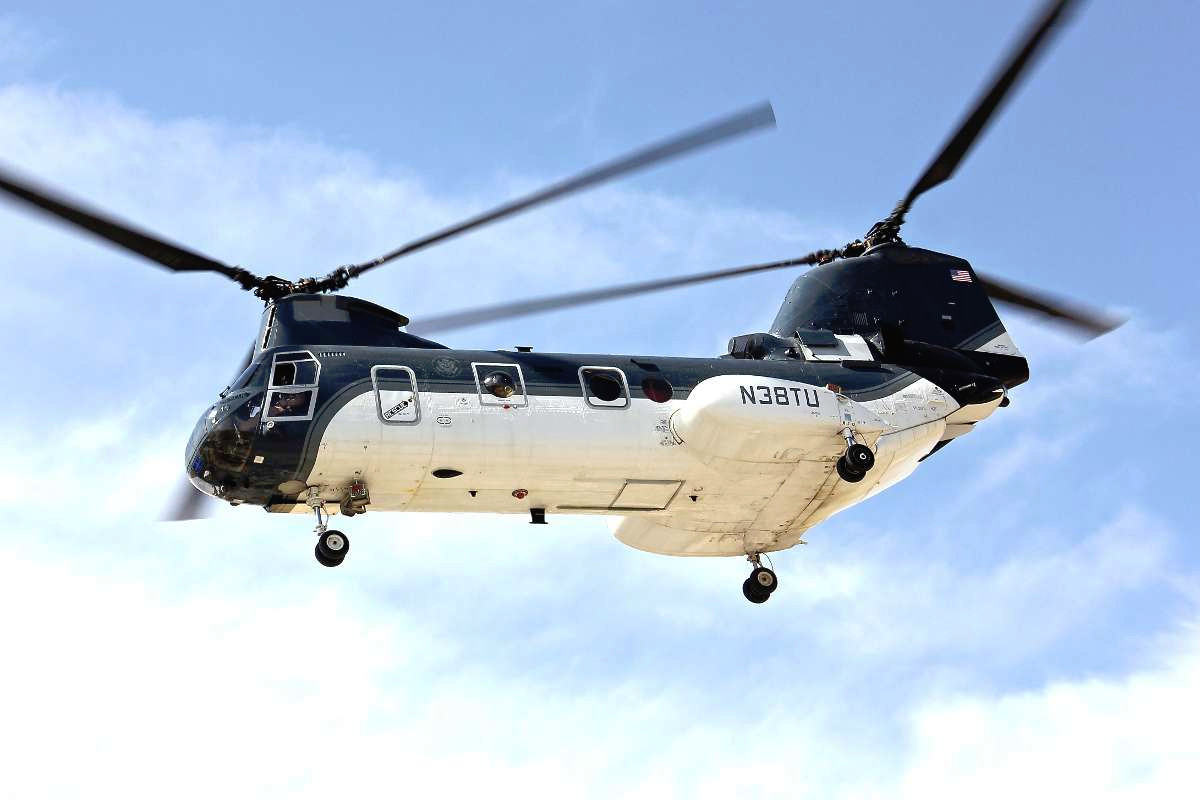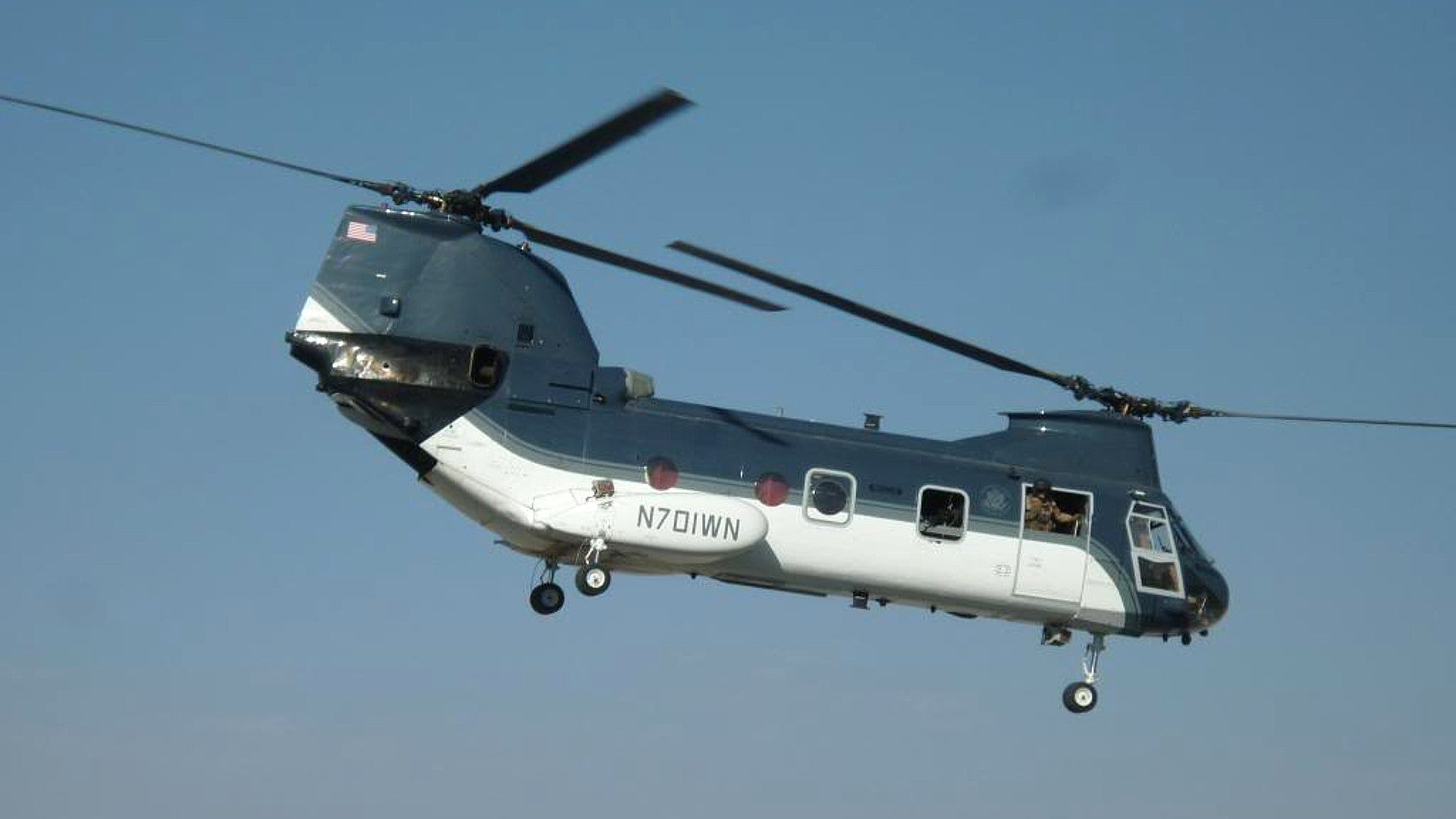U.S. Secretary of State Mike Pompeo has made his first visit to Afghanistan since officially becoming America’s top diplomat. Underscoring the still dangerous state of security in the country’s capital despite 17 years of U.S.-backed efforts to try and improve the situation, he did what any other State Department staffer would do upon arriving in the country, he took a very quick ride in an armed CH-46 helicopter to avoid having to drive the two miles from Kabul’s airport to the U.S. Embassy.
Pompeo’s arrival on July 9, 2018, was itself unannounced, another common security procedure in a country where Taliban militants and other terrorists can and do still have the ability to bombard Hamid Karzai International Airport. According to a report by CBS News’ “60 Minutes” in January 2018, U.S. diplomatic and other civilian government personnel remain banned from using any form of ground transportation, even armored vehicles, to get safely within the blast walls and other defenses that surround the American Embassy proper.
“The strategy sends a clear message to the Taliban that they cannot wait us out,” Pompeo said during a shared press conference with Afghanistan’s President Ashraf Ghani. Armored vehicles did take the Secretary of State from the Embassy to the Presidential Palace, a trip that is only about a mile long.
At the same time, the helicopter rides to and from the Embassy make it equally clear that those insurgents and other hostile actors aren’t likely to abandon their cause any time soon. The service, which State’s Bureau of International Narcotics and Law Enforcement Affairs’ Office of Aviation, better known as the State Department Air Wing, provides, has become so formalized it is literally called Embassy Air.
It operates like a real airline with scheduled departures and arrivals that run five to six days a week, carrying as many as 150 people to and from the Embassy and other locations in the country every day. In the 2017 Fiscal Year, the CH-46 helicopters, which private military company DynCorp operates and maintains, flew a total of 32,000 scheduled flights, as well as 3,500 “special missions,” which would include activities such as moving the Secretary of State around during his visits, according to an official Department of State’s Office of the Inspector General review. You can read more about Embassy Air Program in Afghanistan, as well as in Iraq, here.
State’s Air Wing also operates a number of other fixed-wing aircraft and helicopters in Afghanistan to support various Department of State missions, including counter-drug efforts. The helicopters often carry mounted weapons, as was the case during Pompeo’s trip from the airport.

It’s not clear, however, whether the machine guns are an indication of a new and especially high state of security within Kabul’s central heavily fortified “Green Zone” or if contractors only install them for certain missions. In “60 Minutes” in January 2018, one can see smaller Bell Huey II helicopters in the background and it was not clear whether they were flying escort missions.
All of the CH-46s, which formerly served with the U.S. Marine Corps, have mounts for one 7.62mm M240D machine gun in windows on either side of the main cabin. All of the helicopters also have missile warning sensors and dispensers to fire flares to throw off heat-seeking man-portable shoulder-fired surface-to-air missiles.
The video below shows DynCorp contractors firing the mounted M240D machine guns on an Embassy Air CH-46 in 2015.

Armed or not, the flights aren’t cheap, either. At present, each one-way trip costs the U.S. government $1,350. In the 2019 Fiscal Year, this “ticket” price is set to rise to $2,250, according to a report by Bloomberg. In May 2018, John Sopko, the U.S. Special Inspector General for Afghanistan Reconstruction, a U.S. government watchdog, pointed out that this would make the two-mile journey more expensive than flying round-trip in economy class on Emirates to and from Dulles Airport outside of Washington, D.C. to Kabul.
To be fair, avoiding the ground route, no matter how short, also limits the chances that innocent bystanders could get killed in an attack on an American convoy. Reports indicate that this may actually be just as big an issue as any risk to U.S. government personnel.
Roadside bombs and suicide attacks on Mine Resistant Ambush Protected (MRAP) armored trucks, in particular, are more likely to seriously injure anyone unfortunate enough to be standing nearby, or even some distance away depending on the size of the blast, than the occupants themselves. Though the Taliban and other militants would be at fault, the U.S. government still apparently tries to reduce civilian casualties by flying over many dangerous areas instead.
Of course, the idea that there is such a significant risk of attacks at all in the heavily defended airport and Green Zone which contains Afghanistan’s Presidential Palace, the U.S. Embassy, other foreign embassies, and a smattering of other important offices, still says a lot about the overall security situation in the country. Embassy Air is hardly the only example, either.
In December 2017, the U.S. military announced that it would be assisting in the formation of an all-new Green Zone Police in Kabul due to the apparent inability of the existing uniformed police to maintain law and order. The contract documents regarding the hiring of private firms to help with training this force belie how precarious the situation is in spite of the better part of two decades that the United States and its allies have spent helping to try and rebuild the country.
“Anarchistic groups who desire to derail Afghanistan’s current rebuilding, stabilizing, progressive efforts often target Kabul for violent and sensational attacks,” one document stated. “The President Afghanistan (POA) [Ghani] in concert with his senior security advisors, has determined the current physical security structure within Kabul to be insufficient to meet the requisite security threshold.”
According to the documentation, the Green Zone Police will be similar in size to the Atlanta, Georgia Police Department, but will be primarily responsible for security over an area covering less than two square miles. This appears to be part of a larger plan to dramatically expand the Green Zone’s boundaries that began in 2017, which could potentially eliminate the need for the costly helicopter rides, but will require the additional police presence on the ground.
Risks also extend to U.S. personnel throughout Afghanistan, even in areas nominally under government control. On July 7, 2018, an Afghan security forces member, or an individual posing as one, murdered a soldier from the U.S. Army’s 3rd Infantry Division, who was helping provide security for the service’s new 1st Security Force Assistance Brigade in Afghanistan, in an apparent insider attack.
This came around a week after a positive and unprecedented ceasefire between the Taliban and the government in Kabul, which led to Taliban fighters openly cavorting with civilians in the streets of populated centers, came to an end on June 30, 2018. Both sides, as well as the NATO-led coalition supporting Afghanistan’s government, have now gone back to open fighting.
It is the “Taliban’s turn to give a positive response,” President Ghani said in a public statement ordering his troops to resume operations. “I am ready to extend the ceasefire anytime when the Taliban are ready.”
Until there is a major and lasting improvement to the security situation throughout the country, though, U.S. military and other government personnel will continue to have to use services such as Embassy Air to best protect themselves from insurgent and terrorist attacks.
Contact the author: jtrevithickpr@gmail.com
